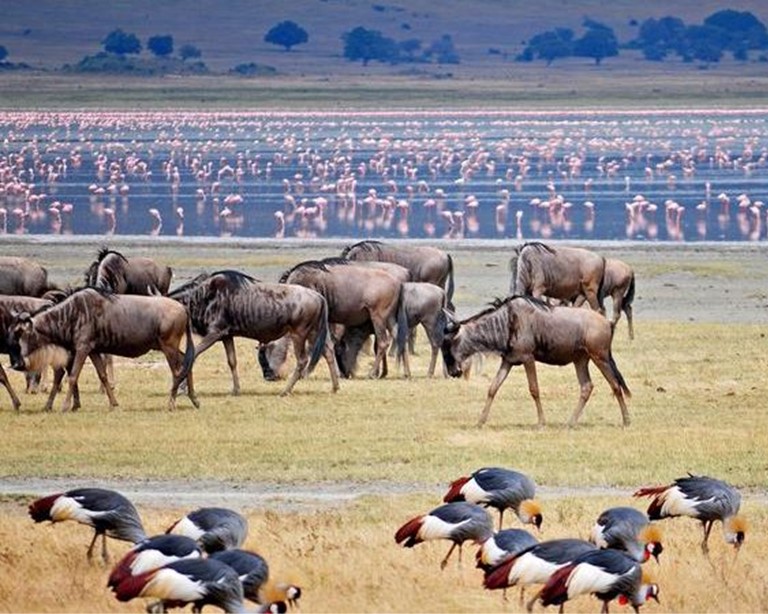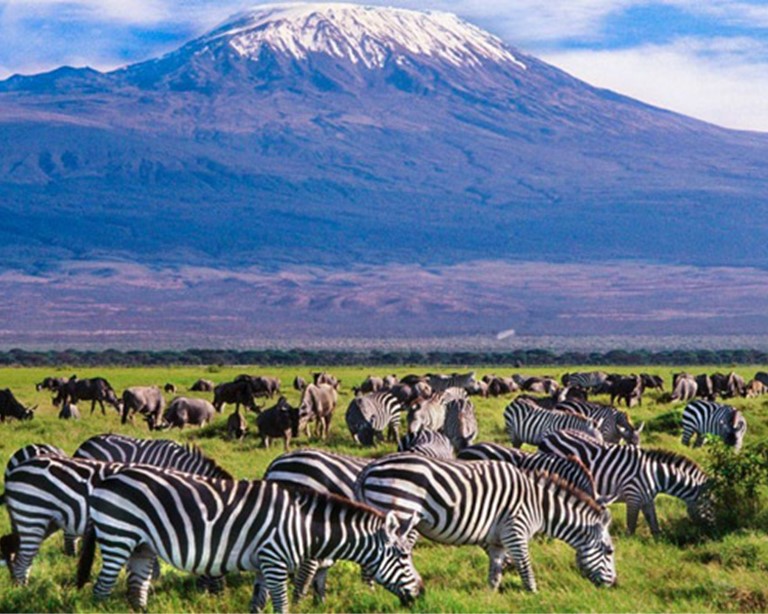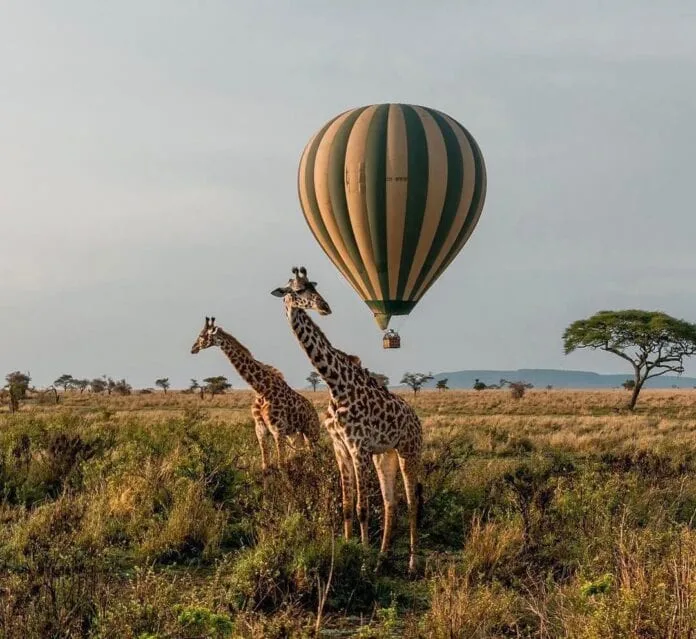Discover Tanzania

Tarangire National Park
The Tarangire Ecosystem is defined by the long-distance migration of wildebeest and zebras. During the dry season, thousands of animals concentrate in Tarangire National Park from the surrounding wet-season dispersal and calving areas. The park is famous for its high density of elephants and baobab trees. Visitors to the park in the June to November dry season can expect to see large herds of thousands of zebras, wildebeest, and cape buffalo. Other common resident animals include waterbuck, giraffe, dik dik, impala, eland, Grant’s gazelle, vervet monkey, banded mongoose, and olive baboon.
Lake Manyara
Lake Manyara National Park is known for flocks of thousands of flamingos that feed along the edge of the lake in the wet season. The groundwater forest to the north of the lake, and largely within the National Park, is a well-known breeding site for thousands of pink-backed pelicans and yellow-billed storks along with smaller numbers of Marabou stork and grey herons. Over 40 species of birds of prey are documented, including palm-nut vulture and Ayre’s hawk-eagle.. Large herds of wildebeest and other plains game from the Mto wa Mbu Game Controlled Area, enter the park from the north for short periods.

MT Kilimanjaro National Park
The park includes the whole of Mount Kilimanjaro above the tree line and the surrounding montane forest belt. A variety of animals can be found in the park. Above the timberline, the Kilimanjaro tree hyrax, the grey duiker, and rodents are frequently encountered. The bushbuck and red duiker appear above the timberline in places. Cape buffaloes are found in the montane forest and occasionally in the moorland and grassland. Elephants can be found between the Namwai and Tarakia rivers and sometimes occur at higher elevations. In the montane forests, blue monkeys, eastern black and white colobuses, bush babies, and leopards can be found


Ngorongoro Conservation Area
The Ngorongoro Conservation Area is a UNESCO World Heritage site located in Tanzania, renowned for its spectacular landscape and rich wildlife. It encompasses the Ngorongoro Crater, a large volcanic caldera formed millions of years ago, which now hosts a diverse ecosystem including lions, elephants, and endangered black rhinos. The area is also home to the Maasai people, who coexist with the wildlife under a unique conservation model that balances human activities with the preservation of natural resources.
Serengeti National Park
Serengeti National Park, located in Tanzania, is renowned for its vast savannahs, diverse wildlife, and annual migration of millions of wildebeest, zebras, and other animals. It spans approximately 14,750 square kilometers (5,700 square miles) and is home to the “Big Five” (elephant, lion, leopard, buffalo, rhino), along with cheetahs, giraffes, hyenas, and numerous bird species. The park’s ecosystem supports a rich biodiversity and offers visitors spectacular opportunities for wildlife viewing, especially during the Great Migration between November and August.


